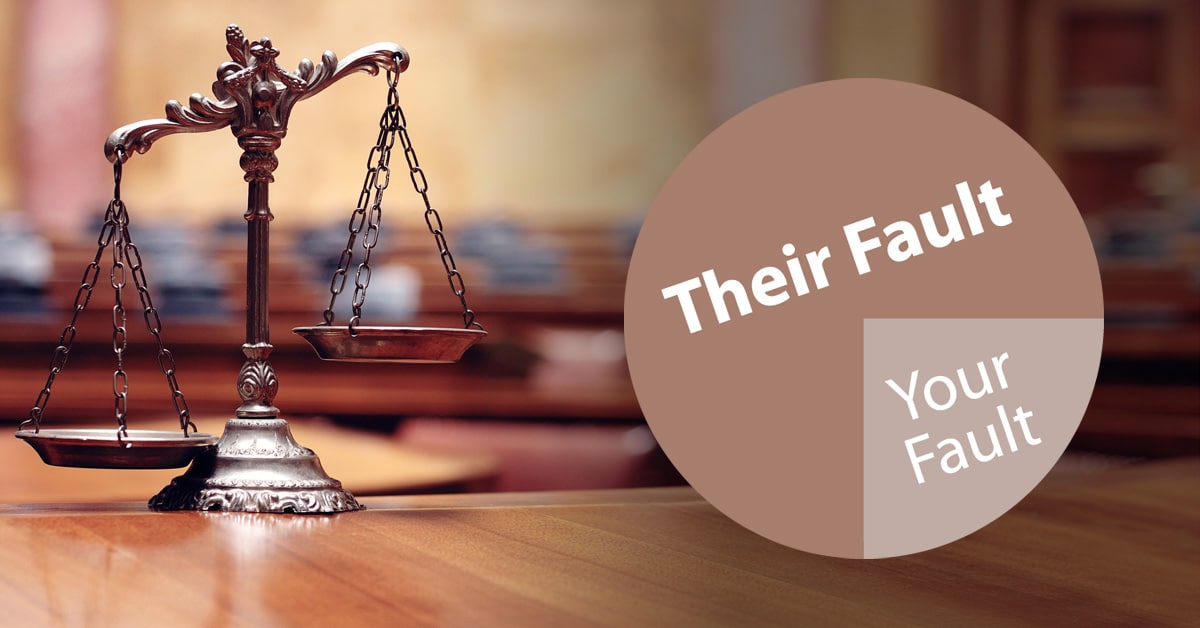
Comparative negligence is a legal principle used in personal injury cases to allocate fault between parties when both may have contributed to an accident or injury. Under comparative negligence, each party’s degree of responsibility is assessed, and the compensation a plaintiff receives is reduced by their percentage of fault. This system aims to provide a fair outcome, allowing injured parties to recover damages even if they share some responsibility for the incident. At 770GoodLaw, we help clients navigate comparative negligence claims, advocating to minimize their fault percentage and maximize their compensation.
Types of Comparative Negligence
Comparative negligence laws vary by state and are typically divided into two main types: pure comparative negligence and modified comparative negligence. Understanding the distinctions is crucial to determining how fault may impact a plaintiff’s recovery:
- Pure Comparative Negligence: In states that follow pure comparative negligence, plaintiffs can recover damages even if they are predominantly at fault. However, their compensation is reduced by their degree of fault. For example, if a plaintiff is 80% at fault, they can still recover 20% of their total damages.
- Modified Comparative Negligence: In states with modified comparative negligence, plaintiffs can only recover damages if their fault is below a specific threshold—typically 50% or 51%. If a plaintiff’s fault exceeds this threshold, they are barred from receiving any compensation.
Importance of Comparative Negligence in Personal Injury Cases
Comparative negligence ensures that liability is proportionately assigned, reflecting each party’s responsibility for the incident. Key roles of comparative negligence include:
-
Fair Distribution of Fault: Comparative negligence allocates responsibility fairly, ensuring that each party is accountable only for their actions or inactions that contributed to the injury.
-
Allowing Partial Recovery: Comparative negligence enables plaintiffs to recover some damages even if they share responsibility, providing a path to compensation that might otherwise be denied.
-
Reducing Financial Liability: Comparative negligence can also benefit defendants by limiting their financial liability, as the plaintiff’s compensation is adjusted based on shared fault.
Examples of Comparative Negligence in Action
Comparative negligence is commonly applied in situations where fault is shared between parties. Examples include:
-
Car Accidents: If a driver is found to be 30% at fault for speeding while the other driver ran a red light and is 70% at fault, the first driver can recover 70% of their damages under comparative negligence.
-
Slip and Fall Cases: If a customer slips on a wet floor but was distracted by their phone, the court may assign partial fault to the customer, reducing their compensation.
-
Pedestrian Accidents: A pedestrian crossing outside a designated crosswalk may share fault if they are struck by a car, impacting their recovery under comparative negligence.
Calculating Damages with Comparative Negligence
In cases involving comparative negligence, the total compensation awarded to the plaintiff is reduced based on their percentage of fault. Calculating damages involves:
- Determining Total Damages: Calculating the full extent of the plaintiff’s damages, including medical bills, lost wages, pain and suffering, and property damage.
- Assessing Fault Percentage: The court or insurance adjuster assigns a percentage of fault to each party, determining how much each party is responsible for the incident.
- Applying the Reduction: The plaintiff’s compensation is reduced by their fault percentage. For example, if the plaintiff’s damages total $100,000 and they are 20% at fault, their final compensation would be $80,000.
Steps to Minimize Fault in Comparative Negligence Claims
To maximize recovery in a comparative negligence case, plaintiffs can take steps to demonstrate minimal fault. Important steps include:
- Gathering Strong Evidence: Collecting photos, witness statements, and accident reports provides a clear account of the incident and helps minimize the plaintiff’s perceived fault.
- Consulting Experts: Expert witnesses, such as accident reconstruction specialists, can clarify the circumstances, reducing the plaintiff’s share of responsibility.
- Following Legal Guidance: Working closely with an attorney helps plaintiffs present a compelling case, emphasizing the defendant’s actions and protecting their right to fair compensation.
- Avoiding Admissions of Fault: Statements made to insurance adjusters or other parties can influence fault assessments; plaintiffs should avoid admitting fault and consult their attorney before making statements.
How 770GoodLaw Assists Clients with Comparative Negligence Claims
At 770GoodLaw, we understand the complexities of comparative negligence and work to protect our clients’ rights by minimizing their fault and maximizing their recovery. Our approach includes:
- Evaluating Evidence of Fault: We thoroughly review all evidence related to the incident, including accident reports, witness statements, and photographs, to establish an accurate assessment of fault.
- Presenting a Strong Case for Minimal Fault: Our attorneys build a compelling argument that highlights the defendant’s role in the incident, seeking to reduce the client’s fault percentage.
- Negotiating with Insurers: We handle negotiations with insurance companies, challenging attempts to inflate our clients’ fault percentages and advocating for full and fair compensation.
- Providing Court Representation: If necessary, we represent clients in court, presenting a persuasive case that demonstrates the defendant’s primary responsibility for the incident.
Importance of Legal Representation in Comparative Negligence Cases
Navigating comparative negligence requires an understanding of legal standards, evidence gathering, and persuasive negotiation. Skilled legal representation helps plaintiffs minimize their fault, maximizing their chances of recovering fair compensation. At 770GoodLaw, we provide dedicated support for clients involved in comparative negligence cases, guiding them through each step with professionalism and care.
Why Choose 770GoodLaw for Comparative Negligence Claims
Our commitment to Relentless Reliability and Sincetegrity drives us to provide comprehensive, client-centered support in comparative negligence cases. At 770GoodLaw, we work tirelessly to protect our clients’ rights, minimizing their fault and securing the compensation they deserve.


